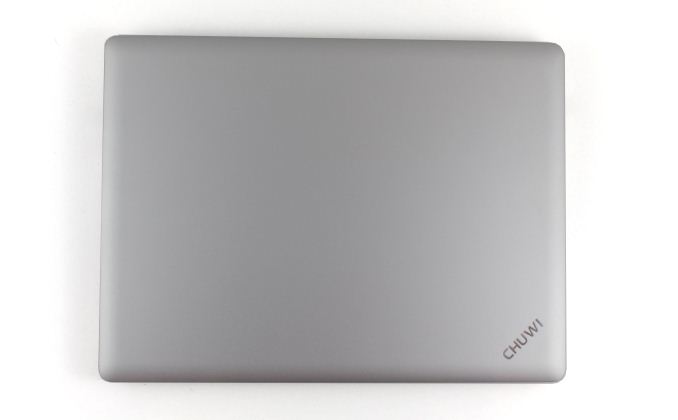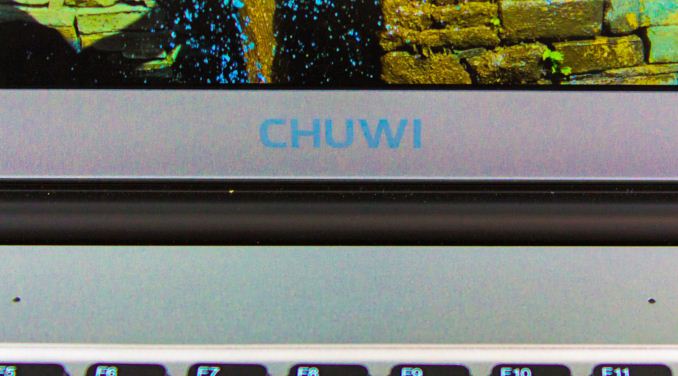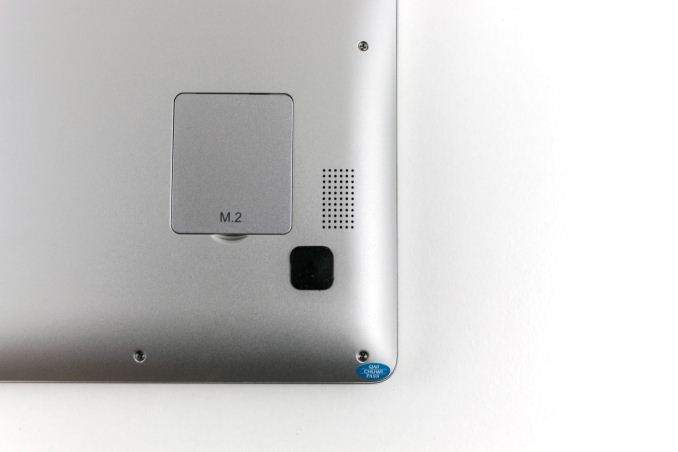The Chuwi LapBook 12.3 Review: Premium Feel, Budget Price
by Brett Howse on September 6, 2017 8:00 AM EST- Posted in
- Laptops
- Apollo Lake
- Goldmont
- Chuwi
Final Words
This is one of the shortest reviews we’ve ever done of a laptop, mostly because it is almost a complete replica of the larger Chuwi LapBook 14.1 we reviewed earlier this year. With the same internals, the performance is practically the same, and it would be very easy to write the smaller version off as a smaller version of the larger notebook. In fact, this isn’t actually the case at all.
Honestly, Chuwi needs to work on its branding more than almost anything. They’ve fallen into calling their devices names that are very similar to other products from other manufacturers. This is probably with the attempt to leverage some of that existing brand recognition, but it is to Chuwi’s detriment to do this. Their products can stand on their own, and be judged on their own. They aren’t all home runs; Chuwi sent the Hi-13 2-in-1 tablet a while back for us to check out, and although we’ve not had a chance to do a full review on it, the Hi-13 is a bit too heavy and awkward as a tablet, and the 2-in-1 nature means that it’s even heavier when used as a laptop, but the LapBook’s we’ve checked out are a different story. Both the LapBook 14.1 and LapBook 12.3 are great devices for the money.
Their naming is confusing though, since they offer several models in the LapBook range, and the only thing different is the screen size tacked on the end, but the LapBook 14.1 and 12.3 are very different devices. The plastic 14.1 is a fine machine for $270, with a good 1920x1080 IPS display that you normally don’t see in a laptop that price, but the LapBook 12.3 is a step ahead of the larger 14.1 in several categories. What makes the LapBook branding even more confusing is that they also offer a LapBook 15.6 which is an older Atom X5 platform, with a 1920x1080 TN display. That means there are three LapBook models, and all of them are significantly different than the others. The company needs to do a better job differentiating its products.
The LapBook 12.3 does jump ahead of the 14.1 in several areas. The display is one of the standout features. The 12.3-inch panel offers great pixel density, for very sharp images and text, and the 3:2 aspect ratio makes it great for productivity tasks. The bezels are larger than many other laptops, including the LapBook 14.1’s 7mm bezels, but is a fact of life when Chuwi can’t afford to get their own custom panels made. They wanted to go with the 3:2 panel, and it was a good choice, despite the bezels.
The all-aluminum build on the LapBook 12.3 puts it into a much higher category of laptop for look and feel. The plastic on the 14.1 was fine, and durable, but this design has that sleek, cool feel of aluminum that you just can’t replicate. It doesn’t change the way you use the device, but it really makes it feel like it’s something you paid a lot more for.
Overall, the Apollo Lake platform is speedy enough for light tasks, and the generous 6 GB of RAM is far more than you see on most budget devices. The 64 GB of eMMC is adequate, but you can pretty easily add more storage via microSD or M.2 if you need it. Even the WiFi is an Intel solution, meaning it’s going to be a stable connection, at least in our experience.
The LapBook 12.3 takes everything that made the 14.1 great, and steps it up a notch. But the amazing thing is that it does this, and doesn’t take the price and put this laptop into another category. The Chuwi LapBook 12.3 isn’t going to be able to compete with Ultrabooks on many fronts, but it does offer a lot of an Ultrabook’s appeal in its thin, light, and sleek design, but with a much, much lower price point. Not very long ago, buying a laptop for under $500 meant it was going to offer several severe compromises, but Chuwi has proven, again, that a low-cost computer doesn’t need to be that way. If you’re ok with the smaller display on the LapBook 12.3, you end up with an amazing laptop for the price.













60 Comments
View All Comments
cfenton - Wednesday, September 6, 2017 - link
How are they doing 6GB of RAM in dual-channel? Is it just Flex Mode, or am I wrong that dual-channel only works fully with matching capacities?Ryan Smith - Wednesday, September 6, 2017 - link
Apollo Lake supports LPDDR4, which is readily available in 12 and 24 Gbit sizes.cfenton - Saturday, September 9, 2017 - link
I had no idea. Thank you for the answer.serendip - Wednesday, September 6, 2017 - link
What's with the poor battery life? I've got a Teclast tablet with an iPad screen (how do they get these surplus parts?) and it lasts 9-10 hours with web browsing or Excel crunching. It uses a more efficient but slower Z8500 Atom and a smaller yet still hi-DPI screen.sarscott - Wednesday, September 6, 2017 - link
Bought the Chuwi 14.1 Lapbook and the screen is great for the price and I like the look and feel very much. There is one major fault that is causing me to return the Lapbook: Overheating! When cool, in a very cool room, the laptop performs great but even in an air conditioned room at 74 degrees the laptop overheats just trying to play a 10 bit HVEC mkv. There is a mod to add a copper shim but I feel that is too much effort for the price. Of minor annoyance is the trackpad requires a complete reinstall of the Windows OS to function normally as a touchpad. Otherwise the touchpad is only recognized by Windows as a mouse which disallows any sort of modification of the Touchpad like disabling the horrendously dysfunctional Tap to Click function. One minor downside is the internal eMMC is slow but you can install a m.2 SSD to make the Lapbook much faster. In summation, if I have to spend time and money installing a copper shim and m.2 SSD the $270 price I paid seems too much as I can buy a Spin 5 with an i5, 8GB of ram, 256 SSD, and better IPS display for $450 brand new at Walmart. The SSD alone adds $100, then factor in my time and extra cost for the shim and thermal paste and your close to $400 already! For any extra $50 to $70 you can get a much better laptop, albeit not as thin, with a better warranty and english speaking customer service!kmmatney - Wednesday, September 13, 2017 - link
I haven't not purchased this laptop, but have had similar experiences with other chinese products. Just too many problems, both software-wise and hardware wise, and usually it's hard to get support. It's just better to just pay a little bit more for a known brand like Acer, etc... Not much more money, but much better quality control and support. For now, I've completely given up on electronic products from lesser known chinese brands.Nevod - Thursday, September 7, 2017 - link
Just recently I've been looking through convertible atombooks looking for something with Surface display, yet there was nothing. The best thing was Acer Spin 1, but it has it's drawbacks and second generation is slowly coming out.Now there's this, but without touch and on a 12" display, not 13". And Gemini Lake is coming out.
Maybe 6 mothns later something really optimal will appear.
vortexmak - Thursday, September 7, 2017 - link
Can you please review the Chuwi Surface competitorsLiverpoolFC5903 - Friday, September 8, 2017 - link
A Core M3 or M5 machine would have been a good inclusion in the benchmarking process. Its GPU is significantly better than the first gen Core M.You can get machines like the Cube i7 book for 350 USD, with a Core M3 (M6Y30), Full HD IPS panel with multi touch support, a 64/128 GB SSD + Full keyboard + trackpad. All the works are there.
Compare that with this. The processor in the Chuwi is at best a tablet processor. Its going to struggle with anything remotely intensive, including basic software like SPSS or Stata.
Hurr Durr - Friday, September 8, 2017 - link
>basic software>IBM analytics
Yeah, right. I guess Photoshop is a basic image resizing program as well now.